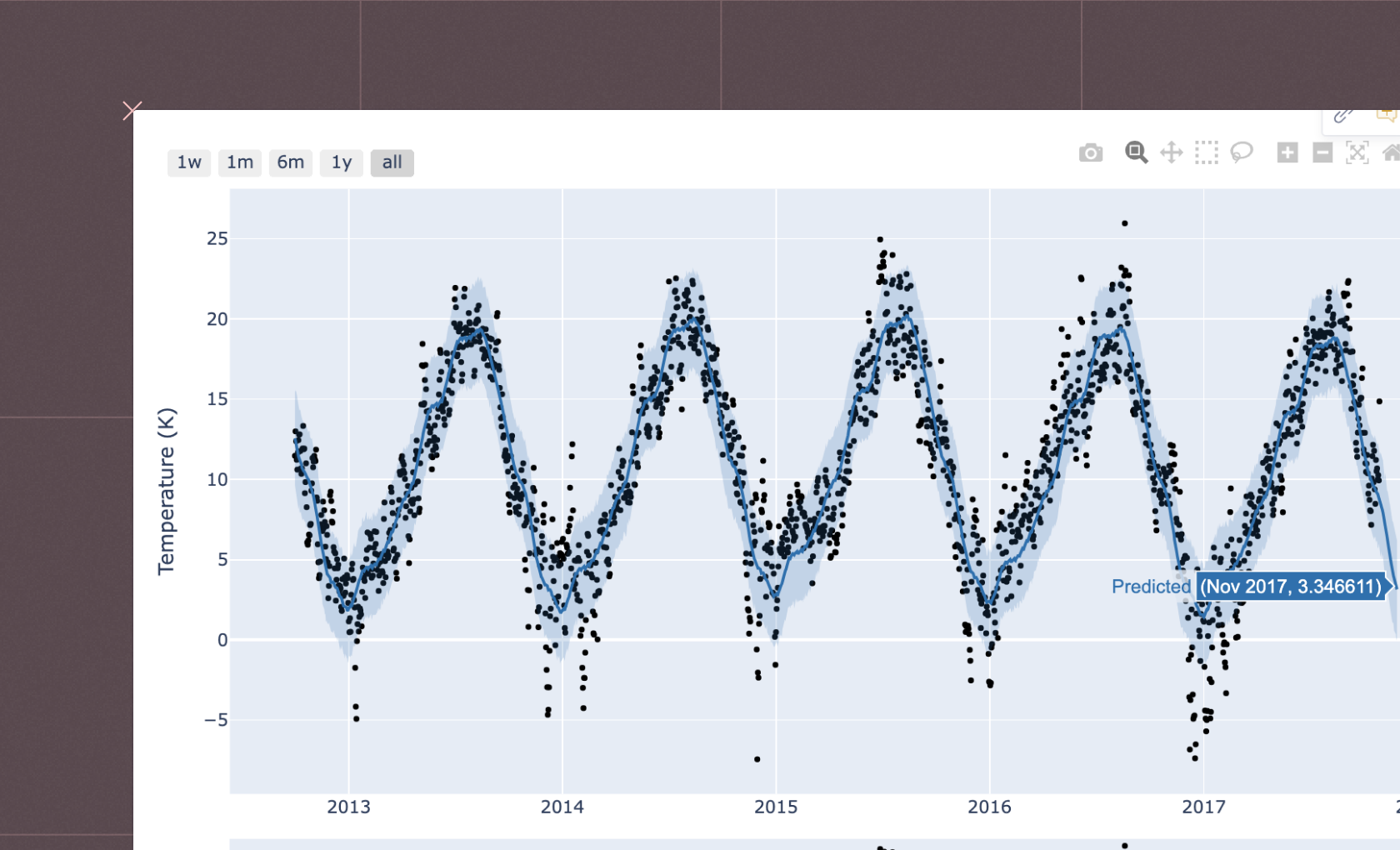A quick guide to Time Series
Time series analysis is a statistical field that deals with analyzing temporal data. Time series analysis can be broken down into several key steps:
Time series preprocessing
Time series preprocessing prepares and cleans time series data before it's used for analysis. Methods include:
Resampling involves changing the frequency of your data points. For instance, you might resample from a daily frequency to a monthly frequency. by aggregating daily observations into monthly averages.
Detrending involves removing any underlying trend in your time series data. Detrending can be accomplished by methods like differencing, where you subtract the previous observation from the current observation, or by fitting a line to the trend and subtracting it.
Deseasonalizing refers to removing the seasonal component of time series data. Seasonality is a pattern of a fixed period that repeats in the data, like an increase in sales every December. Deseasonalizing could involve subtracting the seasonal component identified by a method like moving averages or decomposition.
Normalization refers to the process of rescaling the data to have a specific mean and standard deviation, often to improve the performance of certain models or to allow different time series to be compared on the same scale.
Following time series preprocessing, you can undertake exploratory data analysis to plot the data and explore its basic characteristics to understand its underlying structures and patterns, before modeling the data and using it in future predictions.
Time series modeling
Time series modeling is the process of identifying the most appropriate model that best captures the statistical properties and patterns in the time series data. The aim is to explain the underlying structure of the observations, which could include trend, seasonality, cycles, autocorrelation, or randomness. The model can then be used to describe the behavior of the time series and understand its underlying dynamics.
Two common models here are ARIMA and SARIMA:
ARIMA (AutoRegressive Integrated Moving Average) is a model for time series analysis that combines differencing (to make the data stationary), autoregression, and a moving average model to forecast future points in the series.
SARIMA (Seasonal AutoRegressive Integrated Moving Average): SARIMA models extend ARIMA models by adding a seasonal differencing term, allowing them to effectively model and forecast time series data with a seasonal component.
Time series modeling
Time series forecasting is a predictive technique that builds on time series modeling and analyzes patterns, trends, and seasonality in past observations to predict future outcomes.
Various models can be used for time series forecasting, such as:
Exponential smoothing involves calculating the weighted average of past observations, where the weights decrease exponentially as the observations get older, hence giving more importance to recent observations.
State space models are a class of mathematical models that allow for the representation of linear and non-linear, and univariate and multivariate time series, capturing complex temporal dynamics and often used in conjunction with the Kalman Filter for forecasting.
Recurrent Neural Networks (RNNs) are a type of neural network optimized for processing sequences of data, like time series, by using loops within the network to maintain information across time steps, thus making them effective for forecasting tasks with complex, non-linear time dependencies.
On this page, you'll find interactive examples demonstrating time series analysis, time series forecasting, time series modeling, and other analyses of time series in Python. If you see something interesting, click "Get a copy" to dive deeper and adapt any example to your requirements.
See what else Hex can do
Discover how other data scientists and analysts use Hex for everything from dashboards to deep dives.
FAQ
Can't find your answer here? Get in touch.




